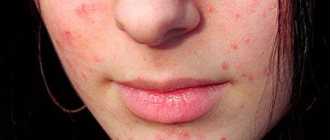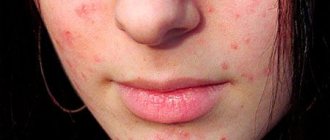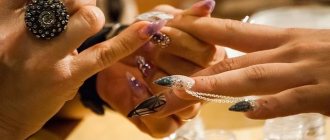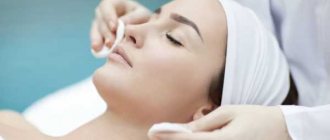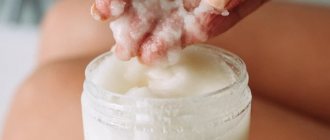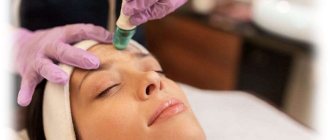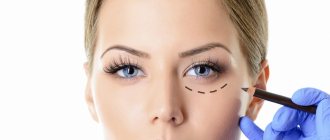- Reasons for the formation of an immature pimple
- Is it possible to squeeze out an unripe pimple?
- How to get rid of an immature pimple
An immature pimple can be called an inflammation of acne that is not yet ready to be removed from the skin, especially by squeezing or cosmetic removal, or a pimple that, as a result of being on the skin for more than 1 week, is most often also called an immature pimple, which for certain reasons we Let's find out further whether it does not disappear from the skin of the face or body.
Typically, such an immature pimple does not have a white filling head and is called a closed comedon, which is more painful and long-lasting than other pimples. Regular pimples usually do not irritate your skin as much and last only a few days, while A closed, immature pimple becomes a more problematic problem, at least for the following reasons:
- Unripe pimples are more painful than other pimples because they are located much deeper in the skin and close to the nerves deep in the skin.
- They are more noticeable than other pimples because they are larger in size and look like a big red bump.
- If you squeeze out such an unripe pimple, the skin can become infected with bacteria and microbes, and as a result of improperly squeezing the pimple, the situation will only become more critical.
Reasons for the formation of an immature pimple
- The main thing that causes active reproduction of an incompletely matured pimple is the increased production of sebum in excess quantities caused by hormonal changes. It is for this reason that acne is quite common among teenagers.
- Another reason is lack of hygiene, which is the obvious cause of all acne problems.
An immature pimple is a type of acne that develops under the surface of the skin. Although the pimple is not noticeable from afar, you can often feel a painful lump on your face or body when you touch the skin, which is most often caused by a cyst or nodule inside the usual pimple shape.
This type of acne develops from a combination of sebum (oil), bacteria and dirt that become trapped underneath your pores.
You may notice a large white area under the skin that is tender to the touch. The area may also be red from inflammation (swelling) of the skin surrounding the pimple.
Periods of chickenpox
Quite a long time passes between infection with the herpes virus and complete recovery. There are four periods:
- incubation (up to three weeks);
- prodromal (up to two days before the appearance of rashes);
- rashes (several waves for two to five days);
- crust formation.
During the prodromal period, the patient experiences general malaise. It is expressed in weakness, nausea, headache. Sometimes the temperature rises to 38-39 degrees, and vomiting occurs. In some patients, there is no prodromal period, and rashes immediately appear some time after infection.
Chickenpox in adults causes severe complications. They do not appear immediately. Some appear after the tenth day of the disease, others after a month.
Is it possible to squeeze out an unripe pimple?
Poll: When did your acne appear? (Number of votes: 4295)
I've been suffering all my life
It's been a couple of years now
About a few months
Recently
To vote, click on the desired answer. results
As tempting as it may be, you should never try to squeeze or squeeze a particularly immature or subcutaneous pimple. You've probably heard in general that squeezing only causes the growth and activation of new bacteria under the skin, which leads to even more pimples. But especially There is a high risk of a scar or scar appearing after squeezing out a pimple, which refers to similar actions regarding immature pimples.
As a result of trying to pop a pimple, doing so will only end up worsening the inflammation, which can only make the area where it appears tenderer to the touch. It may even become more noticeable due to increased redness and marks on the skin.
Trying to squeeze out such pimples, as well as any acne inflammation, can also cause scarring.
Therefore, the best and safest way to deal with such acne is to take skin care measures, seek help from a cosmetologist or dermatologist, or use home tips and recipes for treating immature acne from our article.
Why do new rashes appear after squeezing out a pimple, and what are the consequences of such actions?
Skin and age
Acne often bothers middle-aged people, when the first wrinkles already appear, but the “problematic” skin still persists. The reasons are age-related thickening of the skin, decreased local immunity and endocrine disorders. At this age, acne is located mainly along the oval of the face and on the cheeks, where thin convoluted glands lie.
What to do?
The optimal result is achieved by combining peeling with mesoimmunocorrection. Mesoimmunocorrection is the use of mesotherapy products with hyaluronic acid, vitamins, amino acids that stimulate the skin’s immunity, promote its hydration, and enhance local metabolism and blood circulation. The combination of these methods not only has anti-acne effectiveness, but also helps prevent age-related changes. The skin becomes more elastic, smooth and fresh, which is important for most patients over the age of 30.
Attention! A radical remedy that permanently or permanently reduces the secretion of the sebaceous glands and thins the upper parts of the skin (and therefore cures acne) is the vitamin A drug Roaccutane, which is taken daily for several months and has a cumulative effect. However, you should not delude yourself and self-medicate. This drug is indicated only in cases of severe or moderate disease, and its use requires a preliminary examination. It has contraindications and can sometimes be tolerated with the development of dry skin or other manifestations that are eliminated by certain therapeutic measures. Treatment should be carried out under the supervision of a physician and against the background of regular evaluation of blood tests.
How to get rid of an immature pimple
There are various treatment methods and ways to get rid of pimples that have not ripened for a long time and they begin with the use of the safest home methods of getting rid of them, continue with the use of antiseptic or even antibiotic agents and creams and end with the most serious inflammations with treatment through the use of cosmetic procedures for removing them with a laser or chemical peeling etc.
Use one of the local antibiotics for pimples that do not mature for a long time.
Topical antibiotics can help get rid of any bacteria that specifically contribute to the formation of a pimple. Many antibiotic creams and ointments also reduce inflammation most quickly and significantly reduce the size of the pimple itself.
The most common topical antibiotics for acne include erythromycin ointment, as well as benzoyl peroxide products.
However, topical antibiotics are not effective on their own; you should use them in combination with other skin care and treatment products, which we will describe below.
TEA TREE OIL
Tea tree oil can serve as a gentle alternative to harsh antibiotics and over-the-counter chemicals found in acne creams and ointments. You can find such oil in both beauty stores and pharmacies.
For optimal effectiveness, you need to use a product with at least 5% tea tree oil. Use it twice a day until the unripe pimple is completely healed.
Pure tea tree oil cannot be used unless you dilute it in equal parts with water or another oil. To do this, mix one tablespoon of tea tree oil with one tablespoon of another oil, such as olive or coconut.
Once diluted, apply the oil to the affected area of skin and leave overnight. Wash the area in the morning during your regular face wash routine.
Tea tree oil is safe enough for daily use, but harmful if ingested.
Methods of use and effect of tea tree oil treatment for acne!
WARM COMPRESS
Warm compress
The method of warm removal of an uninflamed pimple promotes blood circulation, accelerating the process of the release of pus from the inside of an unripe pimple.
Warm compresses can help these pimples for several reasons. First, they can help relieve the pain of acne. Heat also helps open up your pores and allow bacteria to come out of the skin on their own.
You can easily make your own compress by wetting a towel with warm water. Apply the towel to the affected area of skin of the unripe pimple and keep it for 5 – 10 minutes at a time. You can repeat this process daily as needed, up to 5 times a day.
You will need:
- Take not too hot water in a bowl and soak a cotton swab in it.
- Apply it on pimples 3 - 4 times a day until the pimples come out.
- The water taken for this procedure should not be very hot because it can burn your skin and cause pain.
- Any herbal infusion like mint, calendula and chamomile in place of water that may be beneficial for your skin tone is recommended in place of water.
HONEY
Honey
Honey is a popular and easy-to-use skin treatment ingredient. Its antiseptic and antimicrobial properties help fight bacteria that are responsible for causing and slowing down the ripening of acne. Best of all, you can apply it directly as it is a natural product and does not contain any by-products. effects.
- Simply dip a cotton ball in honey and smoothly apply it to the pimple.
- Leave it on the pimples for 30 minutes and then wipe the treated area with warm water.
- Repeat this process twice a day for quick and effective pimple treatment results.
- Use only natural honey and do not buy store-bought honey with its chemical content.
Lemon
Professional approach to problem skin
In general, the treatment of problem skin is complex. In the acute stage, when there is inflammation, redness and soreness, methods that suppress inflammation are used: electrocoagulation, antibiotics, drying superficial peels, oxygen therapy. After this, you should begin to normalize the activity of the sebaceous glands and restore the skin's immunity using mesoimmunocorrection, homepathic mesotherapy, and taking Roaccutane. This is the longest and most multi-stage stage of treatment, since it is necessary to change the natural characteristics of the skin and increase its immunity.
At the final stage, the consequences of acne (scars, stagnant bluish spots on the skin) are eliminated with the help of medium peels, mesotherapy with high molecular weight hyaluronic acid, and regular use of regenerating serums and creams.
Complications of chickenpox
In most cases, this disease is not dangerous; children tolerate it easily. The only threat is infection of the wound when combing with dirty hands. In such cases, staphylococci or streptococci may be ingested and a purulent infection may develop.
The chickenpox virus does not disappear from the body after recovery. Temporarily neutralized, it is localized in the spinal cord. As years pass, it can become more active and cause shingles.
In adults, complications may include:
- stomatitis (if a rash appears in the mouth);
- conjunctivitis (on the eyelids);
- inflammation of the middle ear.
The greatest danger is chickenpox pneumonia with a mortality rate of 40%. The consequences of infection with the chickenpox virus can manifest themselves in the form of neurological disorders, heart disease, and joint damage. A month after recovery, there is a risk of developing retinal inflammation and cranial nerve palsy.
How does chickenpox occur in children?
Chickenpox is considered a childhood disease, since it mainly affects children of preschool and primary school age. In children, the illness period is relatively short (about 10 days), while in adults it can last three weeks or more.
During this time, the rash goes through several stages:
- erythematous spots;
- nodular rash (papule);
- ulcers (pustules);
- crusts.
Recovery occurs when all the scabs fall off. Until this point, the person is still contagious and can pass the chickenpox virus to others. The first wave of rashes usually passes quickly, but it is replaced by several more.
As a rule, there are no complications in children. The main thing is that the baby does not scratch the rash to avoid secondary infection and scar formation. Severe disease occurs in newborns. When the first signs of chickenpox appear in an infant, you should immediately call a doctor.
